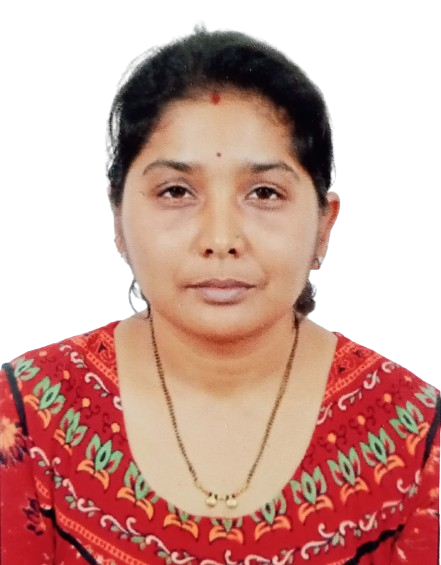Department Of Electronics and Communication Engineering
Vision
To Foster knowledge transformation in engineering through innovation and research in the stream of Electronics and Communication Engineering
Mission
- Provide quality education in electronics and communication to meet the industry requirements.
- Inculcate the competency in innovation and research among the students.
Department Of Electronics and Communication Engineering
Program Specific Outcomes [PSOs]
- PSO1:Ability to mould in accordance to the scenario in order to provide a
tech rich solution for social needs within the available resources.
- PSO2:Ability to incur the theoretical and practical essence of curriculum
towards real time solution. Cementing the concept and predefining professional
roadmap to reach timely goals delivering a practice of professional ethics.
Program Educational Objectives [PEOs]
- PEO1:Produce a quality bunch of technically equipped young technocrats,
working towards the upliftment of tech rich country for all
- PEO2:Produce a quality group of technical erudite, who can litter
the light of knowledge by prodigious engineering skills.
- PEO3:Produce a veritable team which can compel to accelerate an inestimable
momentum for a better tomorrow.
Department Of Electronics and Communication Engineering
Program Outcomes as defined by NBA(POs)
- Engineering Knowledge: Apply the knowledge of mathematics, science, engineering fundamentals, and an engineering specialization to the solution of complex engineering problems.
- Problem analysis: Identify, formulate, research literature, and analyze complex engineering problems reaching substantiated conclusions using the first principles of mathematics, natural sciences, and engineering sciences.
- Design/development of solutions: Design solutions for engineering problems related to computer engineering and design system components or processes that meet the specified needs with appropriate consideration for the public health and safety, and cultural, societal, and environmental considerations.
- Conduct investigations of complex problems: Use research-based knowledge and research methods including design of experiments, analysis and interpretation of data, and synthesis of the information to provide valid conclusions.
- Modern Tool Usage: Create, select, and apply appropriate techniques, resources, and modern engineering and IT tools including prediction and modeling to complex engineering activities with an understanding of the limitations.
- The Engineer and Society : Apply reasoning informed by the contextual knowledge to assess societal, health, safety, legal, and cultural issues and the consequent responsibilities relevant to the professional engineering practice.
- Environment and Sustainability: Understand the impact of the professional engineering solutions in societal and environmental contexts, and demonstrate the knowledge of need for sustainable development.
- Ethics: Apply ethical principles and commit to professional ethics and responsibilities and norms of the engineering practice.
- Individual and Team Work: Function effectively as an individual, and as a member or leader in diverse teams, and in multidisciplinary settings.
- Communication: Communicate effectively on complex engineering activities with the engineering community and with society at large. Some of them are, being able to comprehend and write effective reports and design documentation, make effective presentations, and give and receive clear instructions.
- Project Management and Finance: Demonstrate knowledge and understanding of the engineering and management principles and apply these to one’s own work, as a member and leader in a team, to manage projects and in multidisciplinary environments.
- Lifelong learning: Recognize the need for, and have the preparation and ability to engage in independent and lifelong learning in the broadest context of technological change.
Department Of Electronics and Communication Engineering
From the Desk of Head of Department(HOD)
The department aims at training students in the areas of Electronics like Solid state circuits, VLSI,
Electronic Controls and Communications Engineering including Multiple access technology
and Microwave Engineering.
A team of experienced faculty in Analog and Digital Communications
are conducting research in various aspects of Communications. A VLSI Design group is working on
latest device developments and circuit design algorithms at various levels.
Mr.Prasanna Pattanashetty
HOD,ECE
Department Of Electronics and Communication Engineering
Teaching Staff Members

Mr.Prasanna Pattanashetty
Head of Department,ECE

Mrs.Kaveri Talawar
B.E,MTech[Ph.D]

Dr.Soumya Patil
B.E,MTech,Ph.D

Mr.Mahesh Hiremath
B.E,MTech

Mrs.Joyce Francis
B.E,MTech

Mrs.Sakku
B.E,MTech[Ph.D]

Ms.Priyanka
B.E,MTech

Mr.Ravi Bagade
B.E,MTech

Mrs.Sangeeta Abbigeri
B.E,MTech
Non-Teaching staff Members

Mr.Yallappa Kali

Mr Basavaraj
Department Of Electronics and Communication Engineering
Time Table
Academic 2023-24/2024-25
Academic 2022-23/2023-24
Academic 2020-21/2021-22
Department Of Electronics and Communication Engineering
Student Club
The soul of college / university life is the fraternities on the campus – the
clubs that become a surrogate family for a student, helping him/her grow and
explore latent talents in fields other than academics.
JCET-Hubballi, has a
strong tradition of student bodies and clubs that attract students from all disciplines,
cutting across courses. Indeed, a student has much to look forward to on the campus,
besides classroom learning, and laboratory practical sessions, or even regular dives into library shelves.
Teaching faculty and other staff are equally enthusiastic about the clubs.
Faculty co-ordinator:Prof.
Purpose of the club:
- To engage in practical learning of students with required experience.
- To provide a constructive platform which enhances learning opportunities.
- To create a network of students sharing common interests in the various domains of Electronics and communication Engineering.


